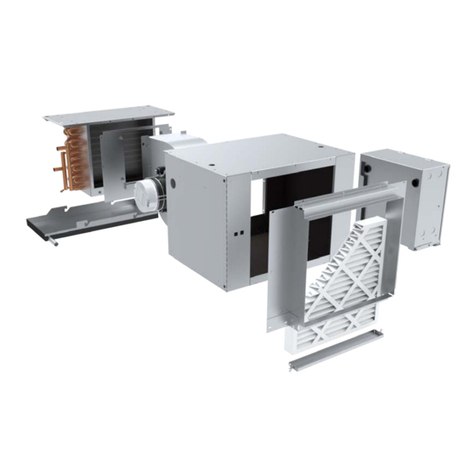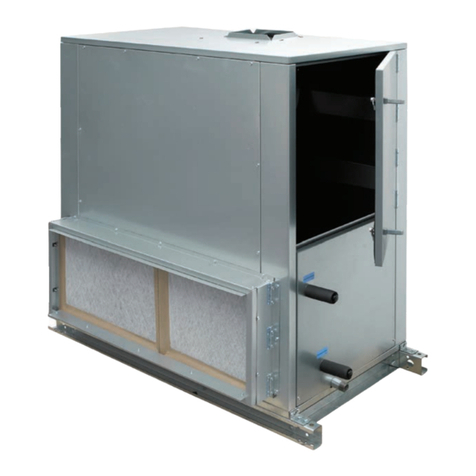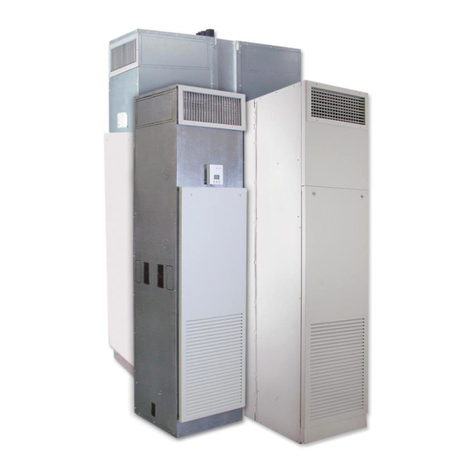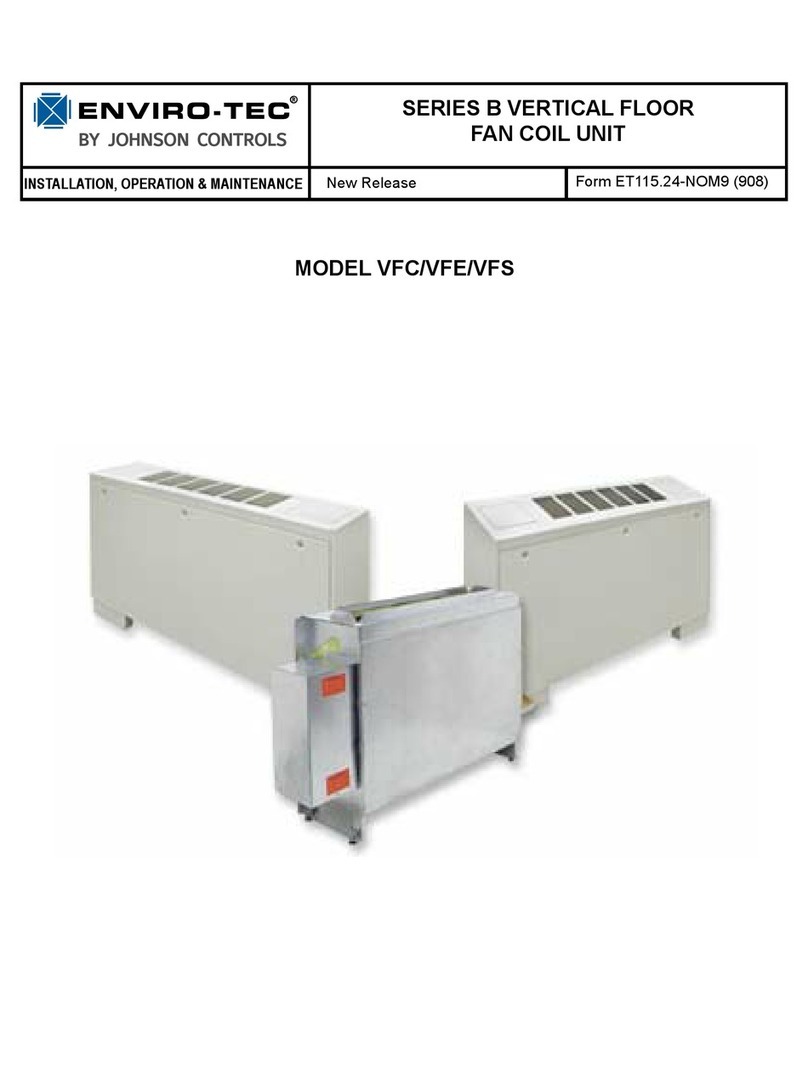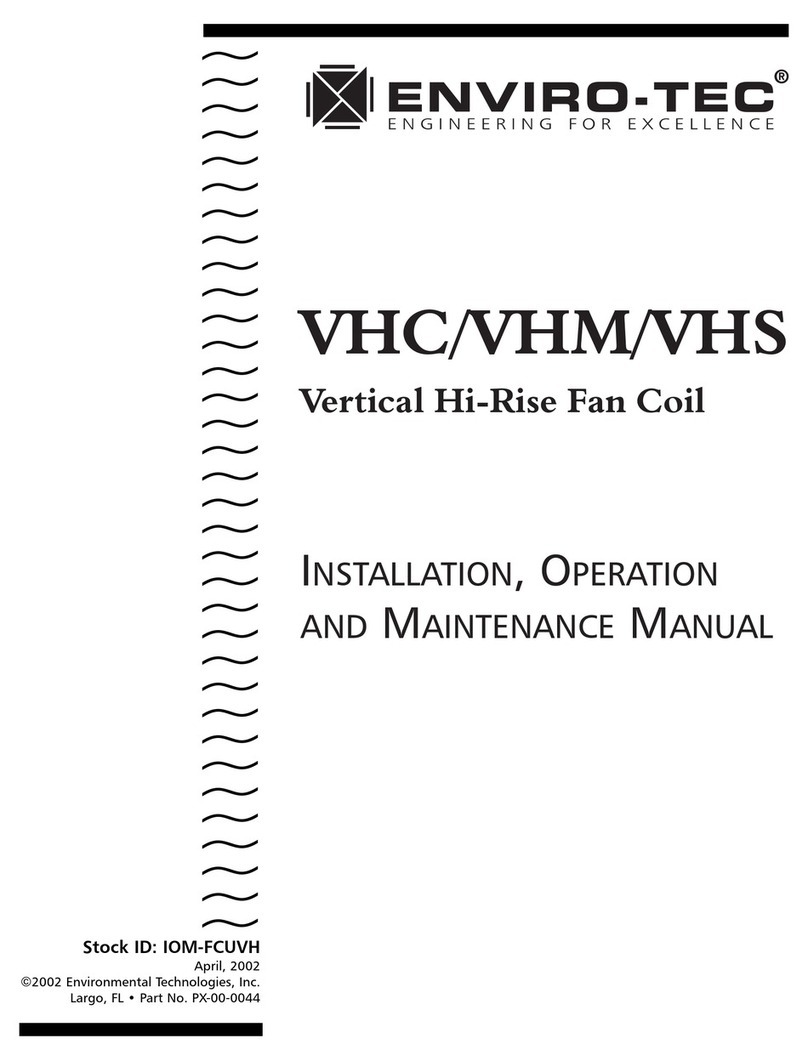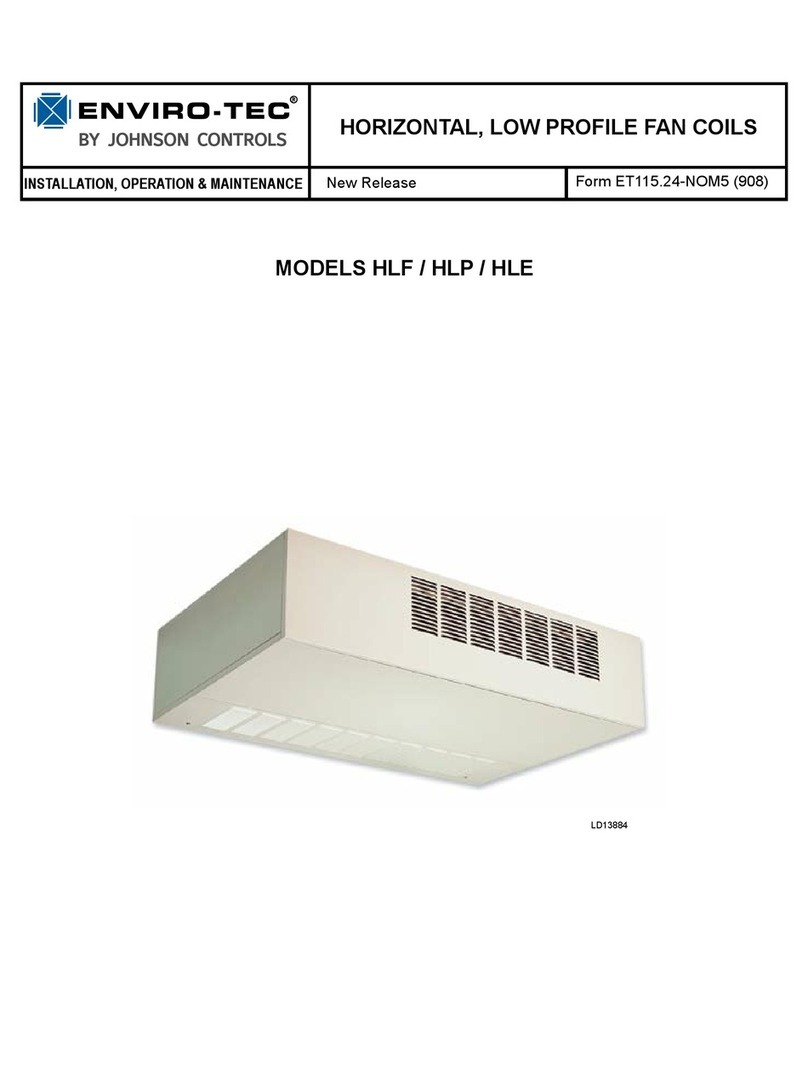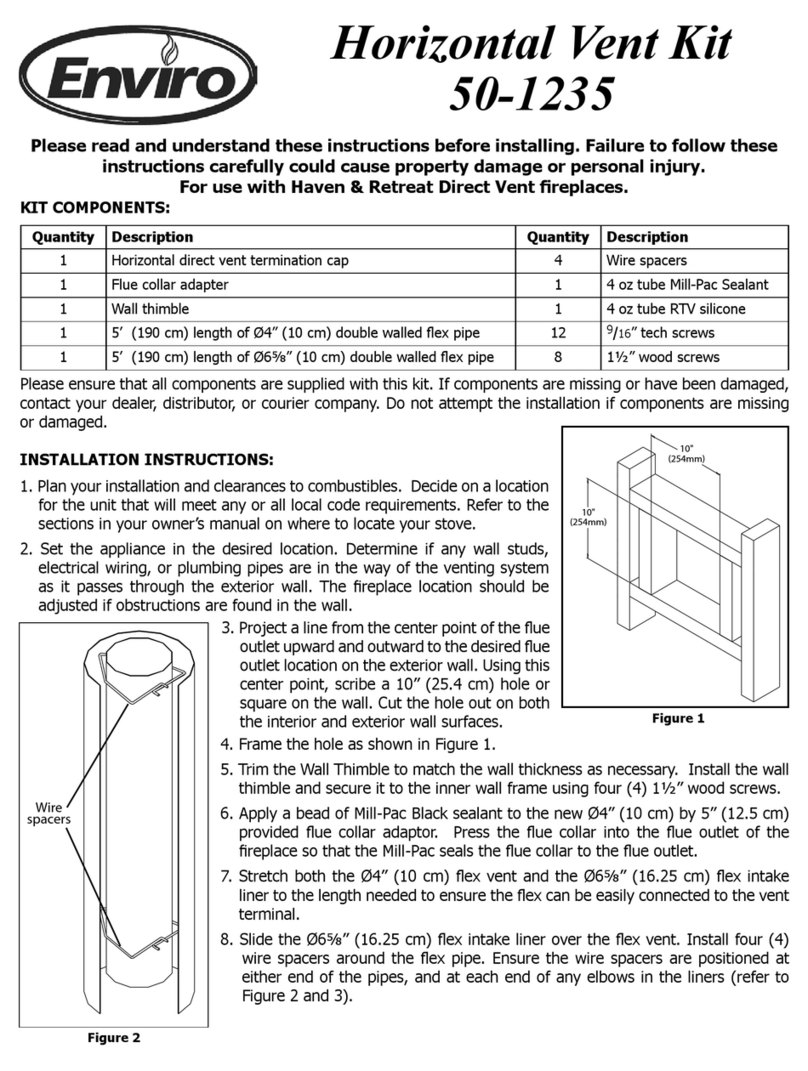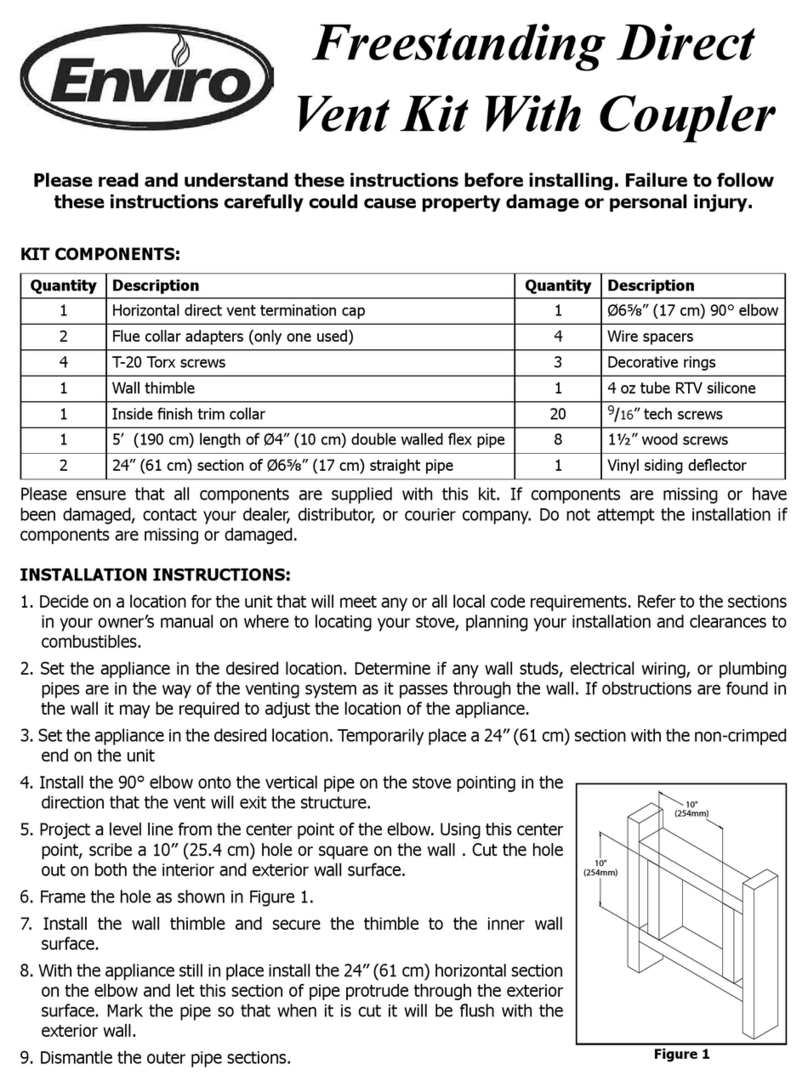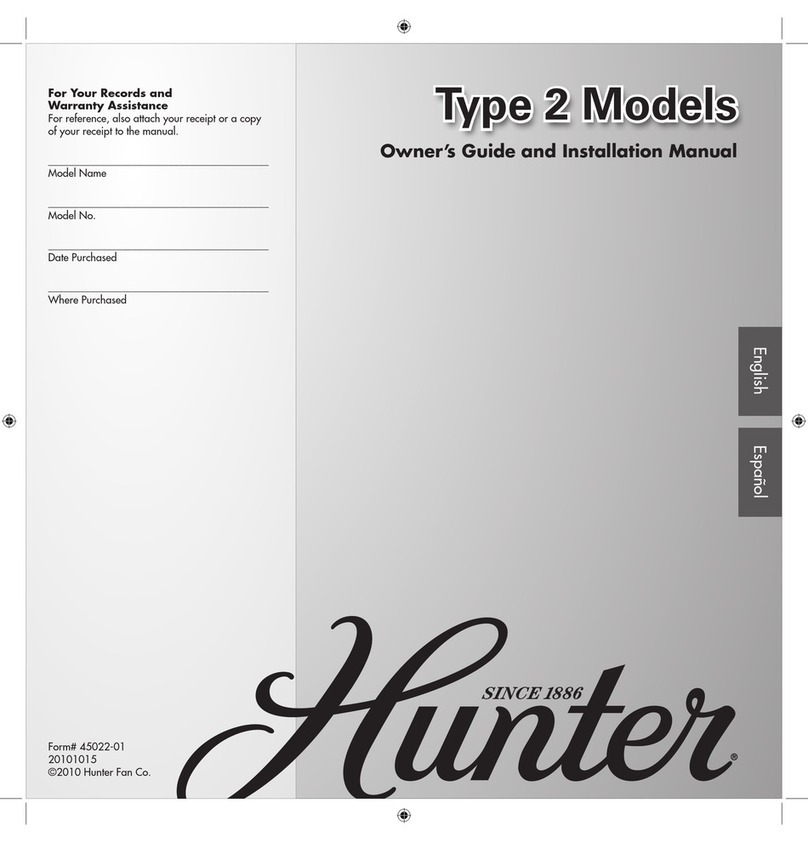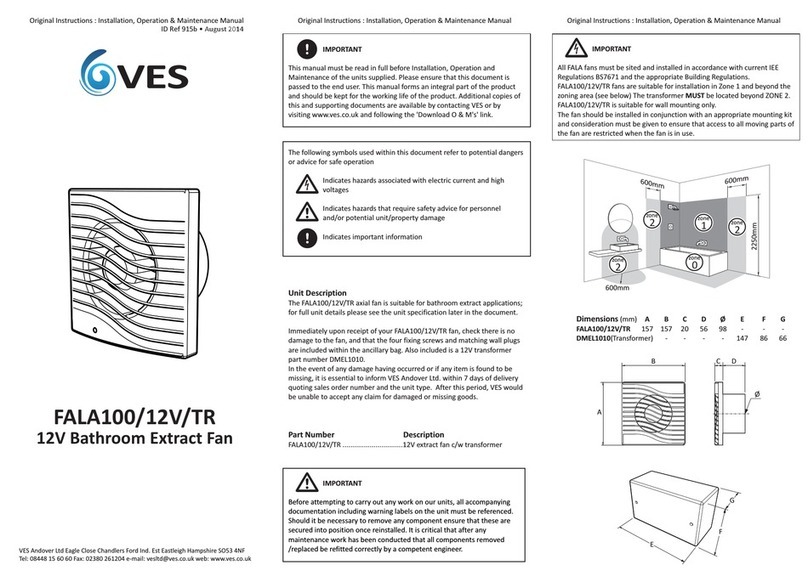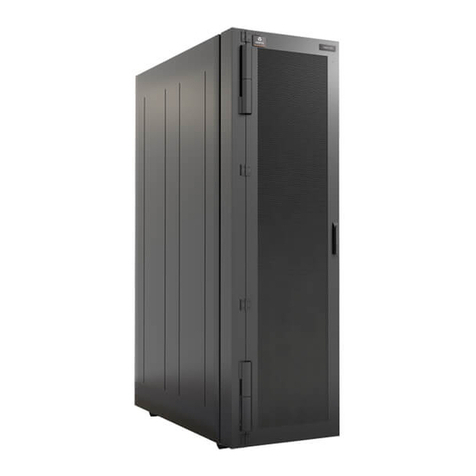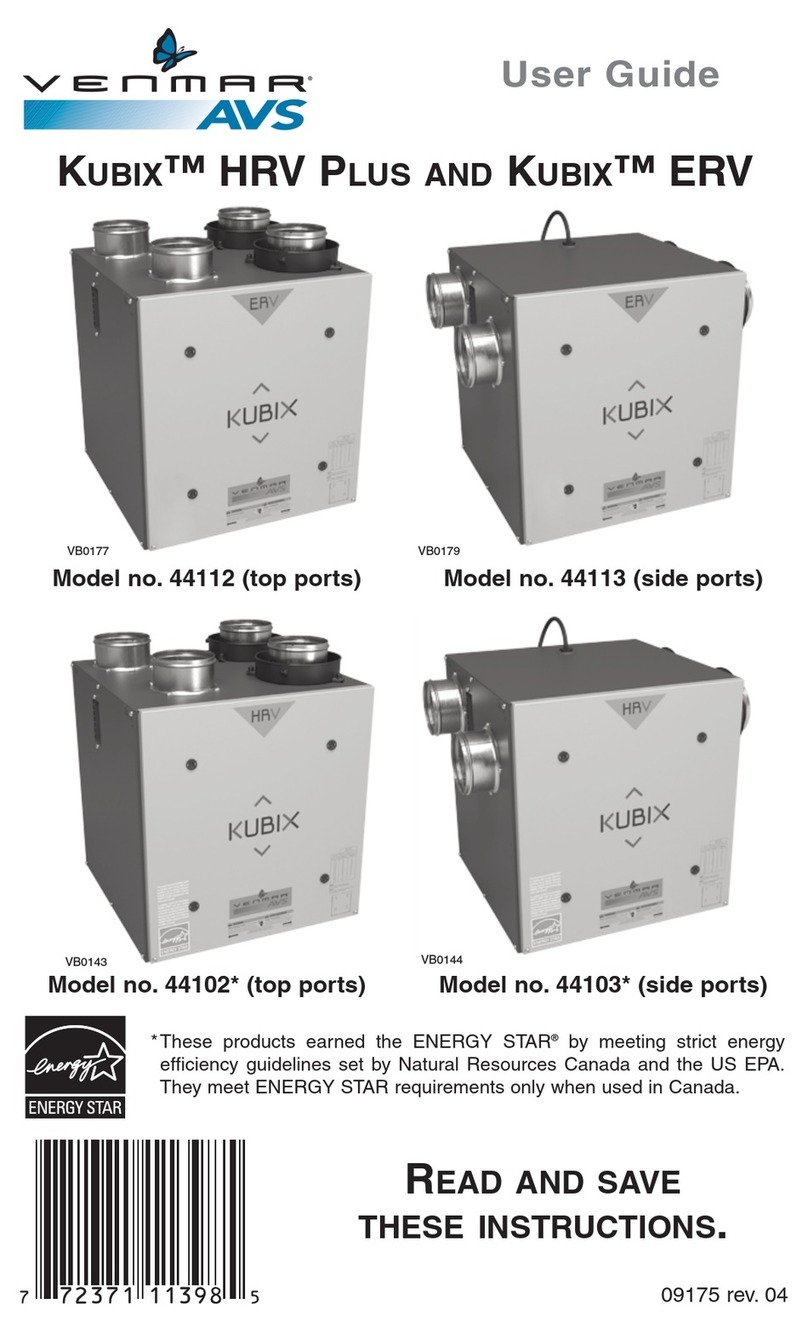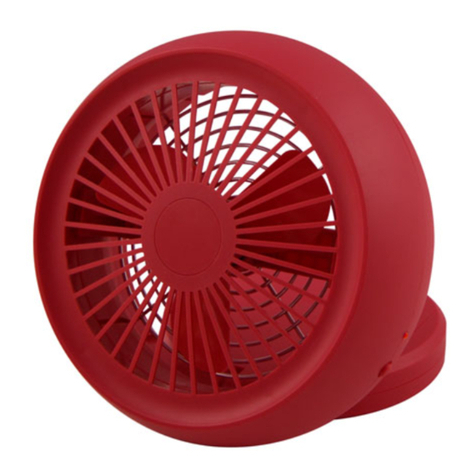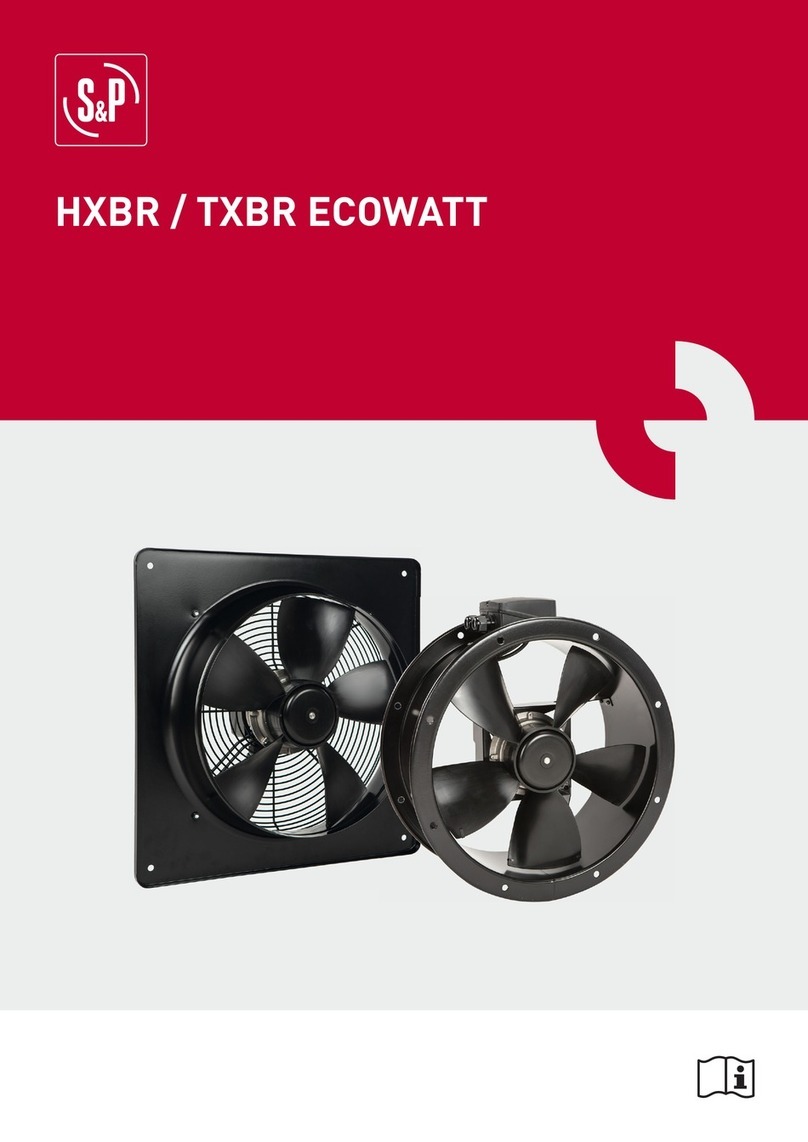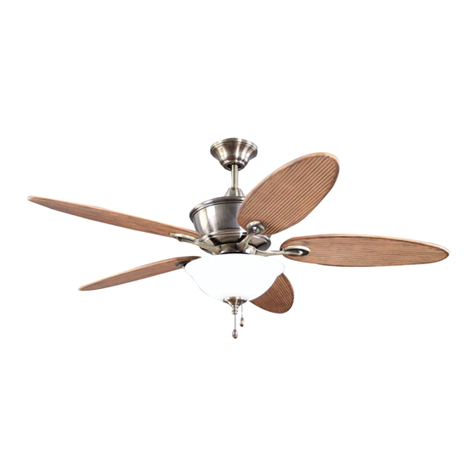
ENVIRO-TEC 3
FORM ET115.24-NOM11 (118)
Never pressurize any equipment
beyond specied operating pressures.
Always pressure test with some inert
uid or gas such as clear water or dry
nitrogen to avoid possible damage
or injury in the event of a leak or
component failure during testing.
Always protect adjacent flammable
material when welding, brazing or
soldering. Use suitable heat shield
material to contain sparks or drops of
solder. Have re extinguisher available
for use when welding or brazing.
The manufacturer assumes no responsibility for personal
injury or property damage resulting from improper
or unsafe practices during the handling, installation,
service, or operation of any equipment.
UNPACKING & INSPECTION
All units are carefully inspected at the factory throughout
the manufacturing process under a strict detailed quality
assurance program, and where possible, all major
components and subassemblies are carefully tested for
proper operation and veried to be in full compliance
with the factory manufacturing documents. Customer
furnished components such as control valves, switches
and DDC controls are not factory tested.
Each unit is carefully packaged for shipment to avoid
damage during normal transport and handling. The
equipment should always be stored in a dry place in the
proper orientation as marked on the carton.
All shipments are made F.O.B. factory and it is the
responsibility of the receiving party to inspect the
equipment upon arrival. Any obvious damage to the
carton and/or its contents should be recorded on the bill of
lading and a claim should be led with the freight carrier.
After determining the condition of the carton exterior,
carefully remove each unit from the carton and inspect
for hidden damage. At this time check to make sure that
“furnished only” items such as switches, thermostats,
etc., are accounted for. Any hidden damage should be
recorded and immediately reported to the carrier and a
claim must be led. In the event a claim for shipping
damage is led, the unit, shipping carton, and all packing
must be retained for physical inspection by the freight
carrier. All equipment should be stored in the factory-
shipping carton with internal packing in place until
installation.
At the time of receipt, the equipment type and
arrangement should be verified against the order
documents. Should any discrepancy be found, the local
Sales Representative should be notied immediately
so that the proper action may be instituted. Should
any question arise concerning warranty repairs, the
factory must be notified BEFORE any corrective
action is taken. Where local repairs or alterations can
be accomplished, the factory must be fully informed as
to the extent and expected cost of those repairs before
work is begun. Where factory operations are required,
the factory must be contacted for authorization to return
equipment and a Return Authorization Number will be
issued. Unauthorized return shipments of equipment
and shipments not marked with an authorization number
will be refused. In addition, the manufacturer will not
accept any claims for unauthorized expenses.
CODE COMPLIANCE
This equipment has been manufactured and certied in
accordance with UL 1995-Standard for Safety, Heating
and Cooling Equipment (CAN/CSA C22.2 NO 236-
M90) and bears the Electrical Testing Laboratories
(ETL) Mark under ETL File No.: 3036742-002.
HANDLING & INSTALLATION
While all equipment is designed for durability and
fabricated for sturdy construction and may present a
rugged appearance, great care must be taken to assure
that no force or pressure be applied to the coil, piping or
drain stub-outs during handling. Also, depending on the
options and accessories, some units could contain delicate
components that may be damaged by improper handling.
Wherever possible, all units should be maintained in an
upright position and handled by the chassis as close as
possible to the mounting point locations.
In the case of a full cabinet unit, the unit must obviously
be handled by the exterior casing. This is acceptable
providing the unit is again maintained in an upright
position and no impact forces are applied that may
damage internal components, access panels, or painted
surfaces. The equipment covered in this manual IS NOT
suitable for outdoor installations. The equipment should
never be stored or installed where it may be subjected
to a hostile environment such as rain, snow, or extreme
temperatures.
